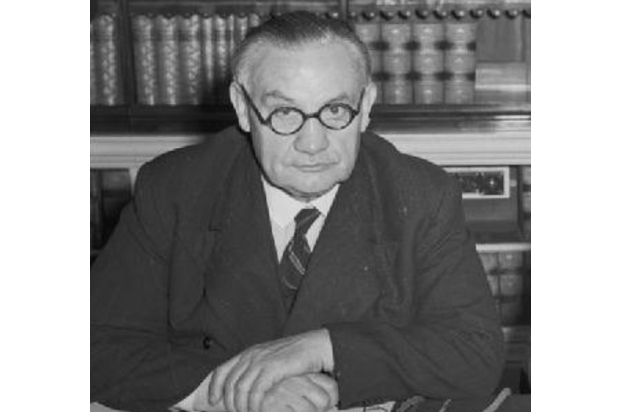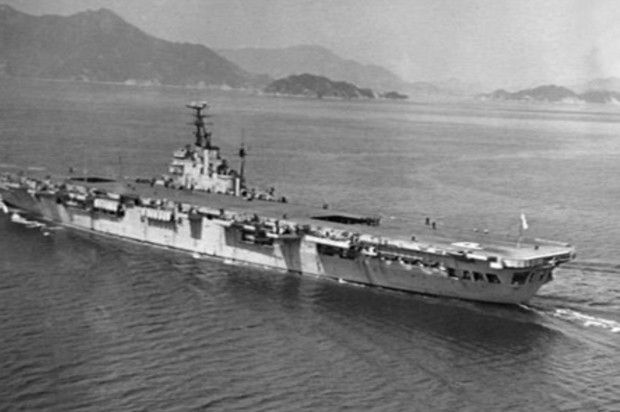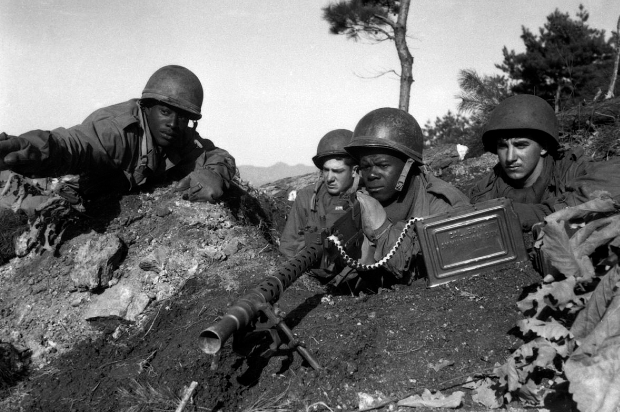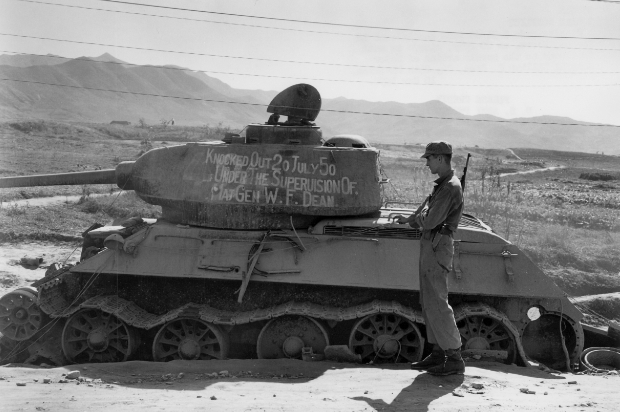
If you ask me where I think we might all be in for further trouble, I believe Korea is the place.
Ernest Bevin, Foreign Secretary, en route to Colombo Conference in January 1950[i]
Seventy years ago today, the North Korean People’s Army of the Democratic People’s Republic of Korea (DPRK) swept south across the 38th parallel. This had divided the Korean peninsula as Japanese troops were driven out by the Allies at the end of the Second World War.
The DPRK regime, under Kim Il-sung (grandfather of the current leader) was backed by the Soviet Union, and by the People’s Republic of China (PRC) which entered the war in October 1950. The South Korean regime, led by Syngman Rhee, was supported by the United States. The DPRK invasion precipitated a conflict that lasted until 1953 at the cost of more than 1 million casualties, involving the Soviet Union, PRC and 21 nations (including UK) in the United Nations Command led by the US.

The outbreak of war in Korea caught Western governments napping. But it should not have been such a surprise. Bevin was not the only one to foresee trouble. At the State Department, George Kennan also identified Korea as a hot spot in the spring of 1950.
Monthly CIA reports described the build-up of DPRK forces, and on 10 May the South Korean Defence minister warned publicly of the invasion risk.[ii] But the Pentagon and General MacArthur dismissed these warnings. In Britain the Joint Intelligence Committee was more interested in Malaya and Hong Kong.
Neither the US nor UK had reliable up-to-date sources of intelligence in the Far East. And disagreements over policy towards Communist China meant that US intelligence on Korea was withheld from the British. Still, there was sufficient evidence of approaching conflict, so why was the invasion such a surprise?
Both the US and UK fell into the classic beartraps of intelligence: confirmation bias, and mirror imaging. They assumed that because the DPRK was a communist regime, its policies would be dictated by Moscow and/or Peking. (In fact, the invasion was Kim Il-sung’s idea, though he did consult Stalin and Mao).

The US and UK did not believe that the Soviet Union, who they thought was pulling the DPRK strings, wanted a conflict with the West at that time. They thought the Soviet Union was distracted by other concerns, whether European (aftermath of Berlin crisis), or regional (Iran). Also, while acknowledging superior DPRK military strength, US and UK strategists believed their technical and administrative ability was inferior, and that South Korea’s strong anti-communist stance, backed by the US, would be a deterrent. In this context, a DPRK invasion of South Korea did not seem logical to Washington or London; therefore it would not happen, or at least not in June 1950.
There is a helpful military equation that might have provided useful strategic input:
capability plus intent = threat, and
threat combined with vulnerability = risk
Were the DPRK forces capable of invading South Korea? Yes. Did they want to (not, was it a logical thing to do)? Yes. So there was a threat. And the South Korean regime, despite US support, was corrupt and creaking, and distracted by rigged elections leading to a new Assembly meeting on 19 June. South Korea was vulnerable: so, combined with the threat from the North there was a risk. But it was either dismissed, or downplayed, in the West.[iii]
After the outbreak of the conflict, the US responded quickly, securing within 3 days a Security Council resolution in support of South Korea. It was assumed that Stalin was behind the DPRK’s move. Both Foreign Office and State Department thought he might be trying to divert attention to the Far East, to mask aggression elsewhere.

The DPRK’s invasion might herald a wider Soviet threat or even a third world war. There was no alternative to armed response. In Britain, Attlee’s Labour government, despite strained resources, agreed in July to send a brigade to Korea.[iv] As the official history puts it: ‘Here was the rub: the blaze might be in Korea just now but if [Stalin] started fires elsewhere over the range of oceans and continents they would run out of fire brigades’.[v]
The Korean War was the first serious conflict involving international armed forces since 1945. It was the first where the knowledge of the existence of atomic weapons was always in policymakers’ minds, and the first serious test of UN machinery. It did not become a world war, but it was a significant milestone. Nor was the end really conclusive. The armistice agreement was signed in July 1953 by North and South Korea, as well as by the US and People’s Republic of China. It created a demilitarised zone dividing Korea that remains the de facto boundary ‒ and source of friction ‒ today.
Keep tabs on the past: sign up for our email alerts
Follow our Foreign & Commonwealth Historians on Twitter @FCOHistorians
[i] Quoted in the official history by Anthony Farrar-Hockley, The British Part in the Korean War, Vol. I, A Distant Obligation (London: HMSO, 1990).
[ii] See P.K. Rose, ‘Two strategic intelligence mistakes in Korea 1950’, CIA Center for Study of Intelligence, https://www.cia.gov/library/center-for-the-study-of-intelligence/csi-publications/csi-stsudies/studies/fall_winter_2001/article06.html
[iii] On this see former DNI analyst Cynthia Grabo, Anticipating surprise: Analysis for Strategic Warning (Maryland; University Press of America, 2004).
[iv] See Gill Bennett, Six Moments of Crisis: Inside British Foreign Policy (Oxford University Press, 2013), Chap. 1.
[v] Farrar-Hockley, p. 46.